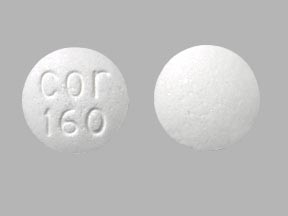Levocarnitine Dosage
Medically reviewed by Drugs.com. Last updated on Apr 23, 2024.
Applies to the following strengths: 200 mg/mL; 250 mg; 330 mg; 500 mg; 100 mg/mL
Usual Adult Dose for:
Usual Pediatric Dose for:
Additional dosage information:
Usual Adult Dose for Carnitine Deficiency
METABOLIC DISORDERS:
Primary or secondary carnitine deficiency:
Oral solution:
Initial dose: 1 gram orally daily in evenly spaced divided doses (every 3 to 4 hours)
Maintenance dose: 1 to 3 grams orally daily in evenly spaced divided doses (every 3 to 4 hours)
Oral tablets:
990 mg orally 1 to 3 times a day, depending on clinical response
Intravenous solution:
50 mg/kg as a slow 2 to 3 minute bolus or by infusion, once a day
- A loading dose may be given in severe metabolic crisis, followed by an equivalent dose every 3 to 4 hours (but not less often than every 6 hours) over the following 24 hours
- Subsequent daily doses should be in the range of 50 mg/kg or as therapy may require
- The highest dose administered has been 300 mg/kg.
END STAGE RENAL PATIENTS ON HEMODIALYSIS
Intravenous solution:
Initial dose: 10 to 20 mg/kg as a slow 2 to 3 minute bolus injection into the venous return line after each dialysis session
- Consider therapy for pre-dialysis trough levels of plasma carnitine below normal (40 to 50 micromol/L).
- Dose adjustments should be guided by pre-dialysis levocarnitine trough levels.
- Downward dose adjustments may be made as early as the third or fourth week of treatment.
Comments:
- Increase dose slowly while assessing tolerance and therapeutic response.
- Periodically monitor blood chemistries, vital signs, plasma carnitine concentrations, and overall clinical condition.
- Administer higher doses with caution and only where clinical and biochemical considerations make it likely that higher doses will be beneficial.
- In some patients, particularly those presenting with cardiomyopathy, supplementation may rapidly alleviate signs and symptoms.
- Treatment should include supportive and other therapy as indicated by the patient's condition.
Uses:
- Primary systemic carnitine deficiency
- Acute and chronic treatment of inborn errors of metabolism resulting in secondary carnitine deficiency
- Prevention and treatment of carnitine deficiency in end stage renal disease patients undergoing dialysis (IV form only)
Usual Pediatric Dose for Carnitine Deficiency
METABOLIC DISORDERS:
Oral solution or tablets:
Initial dose: 50 mg/kg/day orally in evenly divided doses
Maintenance dose: 50 to 100 mg/kg/day orally in evenly divided doses
Maximum dose: 3 grams per day
Intravenous solution:
50 mg/kg as a slow 2 to 3 minute bolus or by infusion, once a day
- A loading dose may be given in severe metabolic crisis, followed by an equivalent dose every 3 to 4 hours (but not less often than every 6 hours) over the following 24 hours
- Subsequent daily doses should be in the range of 50 mg/kg or as therapy may require
- The highest dose administered has been 300 mg/kg.
END STAGE RENAL PATIENTS ON HEMODIALYSIS
Intravenous solution:
Initial dose: 10 to 20 mg/kg as a slow 2 to 3 minute bolus injection into the venous return line after each dialysis session
- Consider therapy for pre-dialysis trough levels of plasma carnitine below normal (40 to 50 micromol/L).
- Dose adjustments should be guided by pre-dialysis levocarnitine trough levels.
- Downward dose adjustments may be made as early as the third or fourth week of treatment.
Comments:
- Increase dose slowly while assessing tolerance and therapeutic response.
- Periodically monitor blood chemistries, vital signs, plasma carnitine concentrations, and overall clinical condition.
- Administer higher doses with caution and only where clinical and biochemical considerations make it likely that higher doses will be beneficial.
- In some patients, particularly those presenting with cardiomyopathy, supplementation may rapidly alleviate signs and symptoms.
- Treatment should include supportive and other therapy as indicated by the patient's condition.
Uses:
- Primary systemic carnitine deficiency
- Acute and chronic treatment of inborn errors of metabolism resulting in secondary carnitine deficiency
- Prevention and treatment of carnitine deficiency in end stage renal disease patients undergoing dialysis (IV form only)
Renal Dose Adjustments
Safety and efficacy have not been evaluated in patients with renal insufficiency.
- Chronic high dose oral administration in patients with severely compromised renal function or end stage renal disease patients on dialysis may lead to accumulation of potentially toxic metabolites.
Liver Dose Adjustments
Data not available
Dialysis
Hemodialysis: See Usual Adult or Pediatric dosing
Peritoneal dialysis: Data not available
Other Comments
Administration advice:
- Oral solutions may be consumed alone, or dissolved in other drinks or liquid foods to reduce taste fatigue.
- Consume oral solutions slowly and space doses out evenly throughout the day to maximize tolerance.
- Dosing during or following meals is preferred.
Monitoring:
- Periodically monitor blood chemistries, vital signs, plasma carnitine concentrations, and overall clinical condition.
More about levocarnitine
- Check interactions
- Compare alternatives
- Pricing & coupons
- Reviews (4)
- Drug images
- Side effects
- During pregnancy
- Drug class: nutraceutical products
- Breastfeeding
Patient resources
- Levocarnitine drug information
- Levocarnitine (Advanced Reading)
- Levocarnitine Capsules and Tablets
- Levocarnitine Injection Solution
- Levocarnitine Oral Solution
Other brands
Professional resources
- Levocarnitine monograph
- Levocarnitine Injection (FDA)
- Levocarnitine Oral Solution (FDA)
- Levocarnitine Tablet (FDA)
Other brands
L-Carnitine, Carnitor, Carnitor SF
Related treatment guides
See also:
Further information
Always consult your healthcare provider to ensure the information displayed on this page applies to your personal circumstances.


